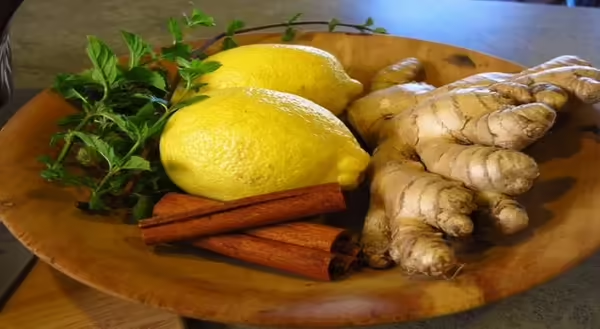
How does your sodium add up?
Do you ever feel like the rings on your fingers are too tight? It could be a sign of too much sodium. The Dietary Guidelines for Americans recommend 2,300 milligrams (mg) of sodium per day for ages 13 and above. The average intake of sodium in the American diet is between 3,400 and 5,000 mg a day, almost double the recommendation. Consuming too much sodium can increase the risk of high blood pressure, heart disease, and stroke.
Salt is made of sodium chloride (40% sodium and 60% chloride). Variations in types of salt include color, geographic location, coarseness, and crystal sizes. For example, pink Himalayan salt is a unique color because of the natural harvesting process; it includes minerals that change the color. The rosy, pink color appears from trace minerals in the area close to the Himalayan Mountains in Pakistan. Table salt is mined, and sea salt is harvested from ocean waters. Kosher salts are larger in crystal size and flake size. Although there are many types, salt is salt, it’s composed naturally of 40% sodium.
According to the Centers for Disease Control and Prevention, about 70% of the sodium, we consume is added to processed foods. Salt makes our food taste good. It brings out the flavor and preserves freshness. Salt also improves the texture and appearance of foods. However, it may be necessary to decrease sodium in your foods. To decrease sodium, choose lower-sodium foods at the grocery store or when eating out, and use less salt and more herbs and spices when cooking at home. Reading the nutrition facts label will give the amount of sodium in a serving. Experiment to see how much sodium you eat a day, add up sodium from the nutrition facts label to determine your daily intake. Find out if you are within the recommended 2,300 mg daily.
The American Heart Association categorized popular foods high in sodium into a quick and easy graphic called The Salty Six. High-sodium foods consist of bread, pizza, sandwiches, cold cuts, cured meats, soup, burritos, and tacos. The recommended 2300 mg adds up quickly in a day's food intake.
A glance at sodium in foods:
- 4 slices bacon, 548 mg sodium.
- 3 ounces ham, 1114 mg sodium.
- 10 potato chips, 200 mg sodium.
- 1/2 cup potato salad, 625 mg sodium.
- 8 oz. tomato juice, 614 mg sodium.
- 1-cup spaghetti sauce, 900-1400 mg sodium.
To reduce sodium, try the following tips:
- Start at the grocery store, and select fresh foods. Read the nutrition facts label. Take home low or reduced-sodium products or salt-free seasonings. Try to stay within 600 mg of sodium per meal.
- At home, try cutting salt by using herbs, spices, and acids. Add a squeeze of fresh lemon, lime juice, or balsamic vinegar to give a delicious flavor as an alternative to salt. Rinse canned vegetables to decrease sodium by 40%.
- When dining out, split a meal. If possible, ask they don't add salt to your meal. Request sauces served on the side. Order a lime or lemon wedge to add zesty flavor to your meal.
Go for a heart-healthy lifestyle. A great resource is the DASH eating plan: Dietary Approaches to Stop Hypertension. This eating plan has been proven to prevent or lower high blood pressure. It's low in sodium and fats. Also, pay attention to the importance of getting into activity each day.
Try our recipe for Rainbow Rice; it's delicious and low in sodium, only 46 mg per serving. It utilizes fresh lime and a lot of herbs and spices for flavor.
Written by: Susan Glassman, MS Ed., Nutrition and Wellness Educator serving Bureau, LaSalle, Marshall, and Putnam Counties
References
- U.S. Department of Agriculture, Dietary Guidelines for Americans (2022-2025). Guideline 4; Limit Foods and Beverages Higher in Added Sugars, Saturated Fat, and Sodium, and Limit Alcoholic Beverages. Page 46.
- Centers for Disease Control and Prevention. (2023, August 23). About Sodium from https://www.cdc.gov/salt/food.htm
- Centers for Disease Control and Prevention. (2021, May 15). Learn How the Nutrition Facts Label Can Help You Improve Your Health from https://www.cdc.gov/nutrition/strategies-guidelines/nutrition-facts-label.html.
- The American Heart Association. (2020). The Salty Six from https://www.heart.org/-/media/aha/h4gm/pdf-files/salty-six-adults-english-infographic.pdf.
- U.S. Department of Health and Human Services. Delicious Heart Healthy Eating (DASH Eating Plan Tools and Resources) from https://healthyeating.nhlbi.nih.gov/.